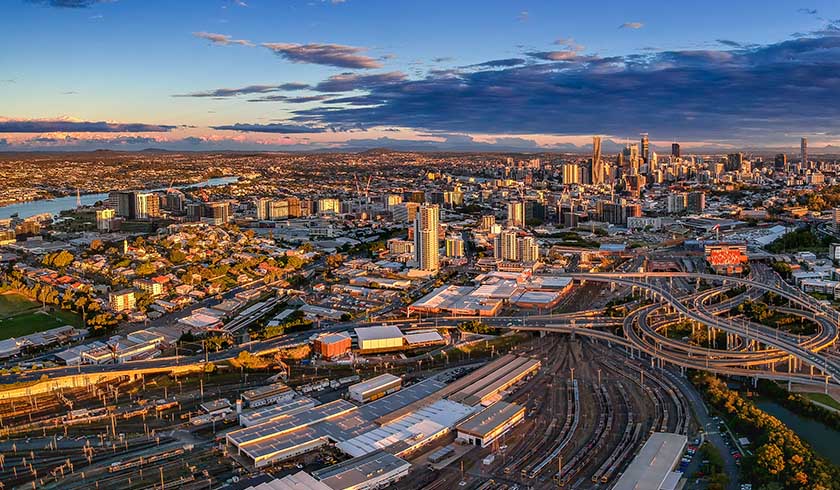Misconceptions about Brisbane’s property market
The Brisbane property market is currently filled with many misconceptions, writes Melinda Jennison.

1. Distance from the CBD in Brisbane (from an investment perspective) is comparable to the distances in both Sydney and Melbourne
Brisbane is much less “dense” than Sydney and Melbourne, so there is a lot more land for “infill” development to take place. According to the South East Queensland Regional Plan (2017), 94 per cent of the projected additional dwellings in the Brisbane local government area will come through infill development and only 6 per cent from greenfield development.
2. Brisbane’s coastal suburbs are highly sought-after investment locations
The Brisbane coastline adjoins Moreton Bay, which is dotted with islands, so the mainland Brisbane suburbs are not beachfront as such. It is important not to group all of our Bayside suburbs the same way because some locations are a lot less desirable than others.
3. The majority of employment in Brisbane is starting to decentralise, so buying an investment property further out is a good strategy
Between now and 2031, the Brisbane CBD is expected to account for the majority of employment growth, with approximately 65 per cent of all new jobs projected to be created in this area, according to the Brisbane Economic Development Plan. The Australian Trade Coast will account for approximately 23 per cent of new jobs, being another big job growth area in the years ahead.
Having good access to the employment hubs is important when considering a long-term investment strategy, so investors needs to be mindful of where the jobs are being created and where a property is located to ensure that accessibility is easy.
4. Radial proximity to the CBD is the only driver of capital growth
Brisbane is not a circular city at all. Geographically, the city is narrower to the north than the south, and bound to the east by Moreton Bay. The western edge of Brisbane sits stop the Herbert Taylor Range and so is geographically restrained.
The majority of Brisbane, however, is dominated by low-lying flood plains, and these are areas that investors needs to be aware of. Because of the layout of our city, the radial distance is not the determinant of capital growth.
Access to employment hubs is important, and also access to public transport. Commute times in Brisbane have doubled in the last 10 years, and our roads are becoming more congested every day, so investors need to consider what Brisbane will look like 10-20 years from now and not make their decisions on the Brisbane we see today.
5. ‘Good’ investments are solid homes made of brick and concrete
Brisbane has a unique architectural style and therefore many properties located closer to the CBD are made of “tin and timber”. In terms of property investment, the house itself is not what determines whether an investment is good or not – it is also very much about the location.
That said, many of the character Queensland homes are the most desirable type of property, and many owner-occupiers love living in these properties.
6. Investors should avoid properties containing asbestos
Most of the older Brisbane properties will have been constructed with building products that contain asbestos. This does not pose a health risk to those living in the property. Asbestos is only an issue if it breaks and the particles are inhaled, so it should never be a deal breaker on a Brisbane property.
7. Timber homes should be avoided because of the risk of termite damage
All types of properties can be impacted by termites (including brick and tile homes), so just because a house is built predominantly of timber does not make it a primary target. There are ways investors can minimise the risk to damage by placing protective barriers around the perimeter of a property and ensuring construction methods were compliant with termite invasion prevention methods.
8. Adding a granny flat is a good way to improve investor returns
Whilst granny flats can increase an investor’s rental return, there must be demand for this type of property from tenants in the area that the granny flat is proposed, and the resale value must also be considered, because often adding a granny flat limits the re-sale market to just investors. Additionally, in the Brisbane local government area, it is illegal to rent out a granny flat under a separate tenancy agreement, so this strategy is only legal in the greater Brisbane region.
9. Brand-new house and land packages in greenfield locations will provide good capital growth opportunities for investors
Capital growth is often negative during the first few years due to the premium placed on brand-new properties where you are paying a lot more for the house than the land. Additionally, according to Broad Hectare Land Studies conducted by the Queensland government, approximately 75 per cent of the future land supply for new dwellings will come from the Ipswich, Logan and Gold Coast Shires, so the location of the property must also be carefully considered when investors are looking at this strategy.
10. Property data can accurately determine the best locations to buy an investment property in Brisbane
Residential property is largely made up of home buyers (approximately 70 per cent of all buyers), and therefore investors, who rely solely on data, are the smaller segment of the total market. While data should be considered, investors should also consider the “desirability” of a location based on its owner-occupier appeal to capture the highest chance of long-term capital growth, as owners (who buy with emotion) will continue to buy in areas that have easy access to employment, parkland and other lifestyle drivers.
Melinda Jennison is a buyers agent and property investment advisor at Streamline Property Buyers.

